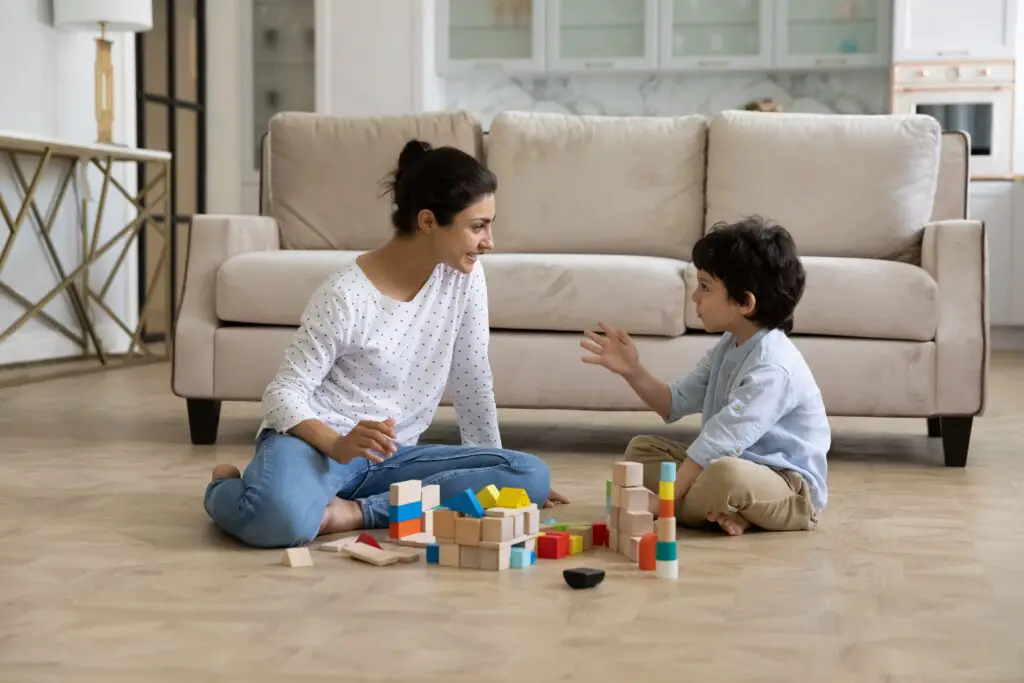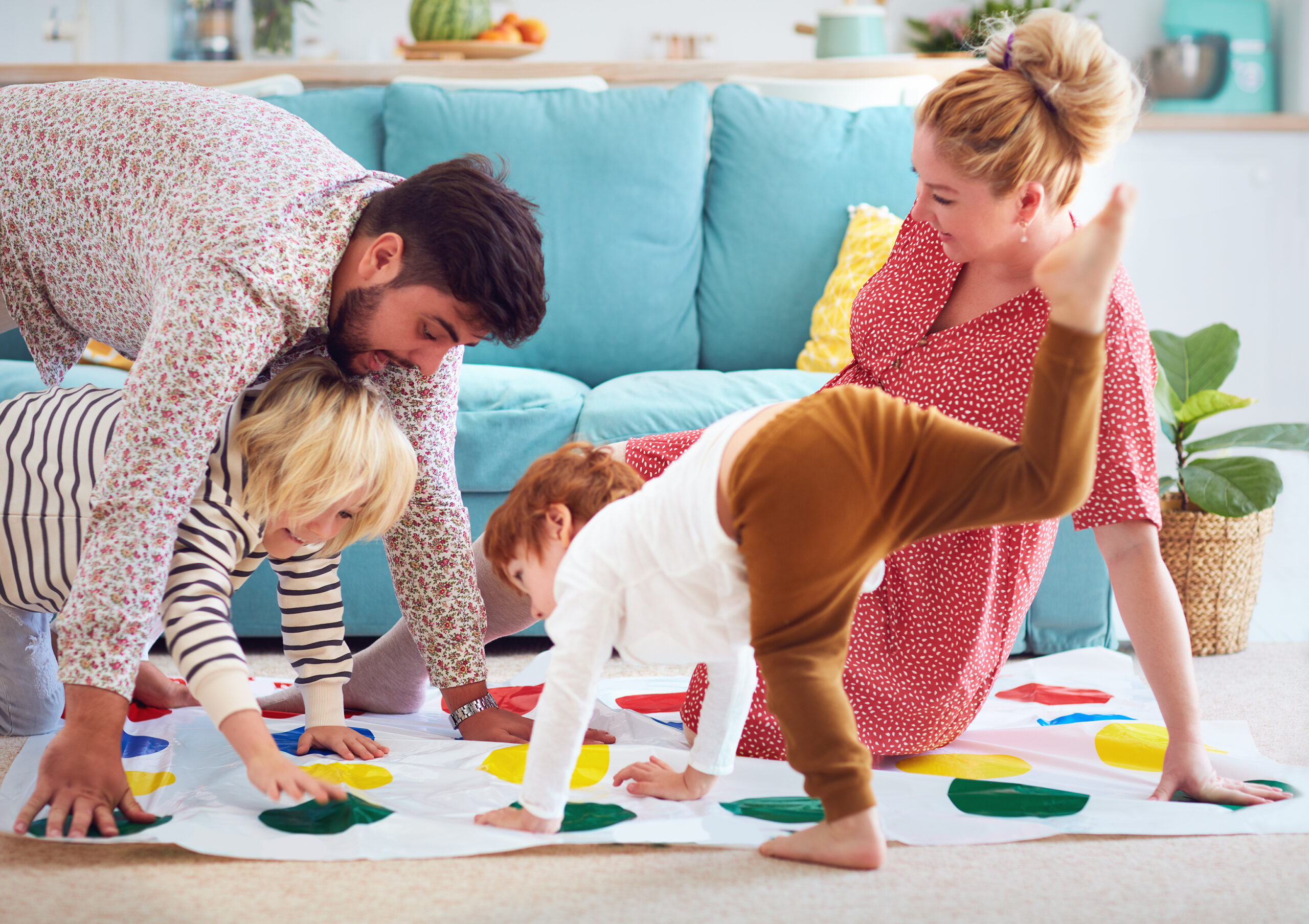Hey there, parents and educators! Are you ready to get those little bundles of energy moving? Today, we’re diving into the world of movement games for kids, a fantastic way to channel their endless energy into fun and healthy activities. These games are not just about wiggles and giggles; they’re crucial for development, helping with coordination, balance, and social skills. So, lace up those sneakers, and let’s get ready to turn playtime into an adventure that grooves the whole body!
Who doesn’t know it? We want to put our kids to bed in the evening and they are full of energy. This can take a long time until they finally fall asleep. On weekends, I try to be as active as possible with the kids. Ideally, these are games where they can learn something. But sometimes, simple games are enough. The main thing is a lot of movement.

It’s all about making fitness fun and accessible. With a variety of movement games available, you can easily find activities that will engage your child irrespective of their age or interests. Whether it’s during a sunny day at the park or within the confines of your home on a rainy day, there’s always an opportunity for kids to move and learn. Remember, when kids are in motion, they’re not just working out their bodies; they’re also exercising their minds, developing social skills, and learning how to navigate the world around them.
Benefits of Movement Games for Kids
Engaging your kids in movement games is not only fun but essential for their growth. Let’s explore how these activities promote physical health, cognitive development, and social skills.
Physical Health Advantages
- Strength and Stamina: Movement games encourage children to use their muscles, which helps build strength. Games like Limbo challenge kids to balance and increase flexibility, while more vigorous games improve cardiovascular endurance.
- Motor Skills: These games also promote fine and gross motor development. Activities that require coordination, like dance games, improve both types of motor skills.
Cognitive Development
- Concentration and Productivity: Participation in movement games has been shown to boost children’s concentration, leading to better productivity and even enhancing self-esteem.
- Learning through Play: Cognitive advancement is another significant benefit. Movement games often involve strategy, memory, and problem-solving, which are crucial for intellectual growth.
Social Skills Enhancement
- Group Dynamics: Kids learn to cooperate and function within a group, an essential social skill. This is evident in games that require teamwork, which teach children about leadership and collaboration.
- Emotional Regulation: According to experts like Peter Gray, Ph.D., movement can help kids with self-regulation, managing emotions such as fear and anger through rough-and-tumble play.
In addition to activity, social skills are very important. It can increase frustration tolerance. Children should learn to coordinate with others and form a team. To let others go first and assert themselves. Movement games give them so many opportunities to develop.
Popular Movement Games for Kids and Activities

Movement games for kids are essential in promoting physical activity and engagement in a fun and interactive way. These games not only support physical development but also enhance coordination, balance, and cognitive skills.
Indoor Games
- Musical Chairs: A classic that encourages kids to react quickly as they find a chair when the music stops. Fun Sensory Play has highlighted its popularity.
- Freeze Dance: Dance until the music stops, then freeze! This game is perfect for an indoor setting and it also sparks creativity.
Outdoor Games
- Tag or Touch: One person is ‘it’ and must tag others to pass on the role. This game is adaptable and can be played with varying rules.
- Hopscotch: Draw a grid with chalk, throw a stone, and hop through the squares to retrieve it. Hopscotch is a time-tested game that remains a favorite among kids.
Water Play
Water play offers refreshing movement games that combine fun with the sensory experience of water, great for cooling off on Summer days.
- Water Balloon Toss: Partner kids up and have them toss a water balloon back and forth, taking a step back with each successful catch.
- Duck, Duck, Splash: It is similar to Duck, Duck, Goose, but with a twist. The “it” person carries a small bucket of water to splash on the chosen “goose”.
Guidelines for Safe Play

Incorporating movement games for kids is a fantastic way to encourage healthy activity, but it’s crucial to prioritize safety to prevent injuries.
Supervision and Safety Measures
When it comes to movement games for kids, active supervision is key. You need to watch closely to anticipate any potential hazards and intervene when necessary. Ensure that the environment is safe for play by:
- Checking for and removing any dangerous objects.
- Make sure the play area is free from sharp edges or hard surfaces.
- Establishing clear rules about acceptable play behavior.
Age-Appropriate Game Selection
Selecting games that align with the children’s developmental stage is essential for safety and enjoyment. For toddlers and preschoolers, focus on games that promote basic motor skills like jumping or running without complex rules that could confuse them. Older children can handle more structured games with increased physical challenges. Remember, the goal is to match the game’s complexity with the child’s physical and cognitive abilities.
Incorporating Educational Elements

When you introduce movement games for kids into your educational environment, you’re not just getting them active; you’re also opening doors to enhance their learning through engaging physical play.
Learning Through Play
Kids’ natural curiosity and zest for play make movement games an excellent conduit for learning. By weaving educational concepts into fun movement activities, children can learn about numbers, letters, and social skills without even realizing they’re learning. For instance, a movement-based game like ‘Math Hopscotch’ combines physical activity with number recognition and numeracy skills.
- Math Hopscotch: Create hopscotch grids with equations and have children solve them as they hop.
- Alphabet Relay: Kids run to collect letters to form words under a time limit.
Movement Games in the Classroom
Introducing movement games in the classroom can greatly improve concentration, memory, and cognitive development. Digital movement games that require kids to physically search and find items while answering questions can blend technology with physical activity to cover a range of subjects.
- Movement Hide and Seek: Hide numbers or letters around the room and have students find them, then perform an action that corresponds with the find.
- Science Says: A twist on “Simon Says” where students perform an action related to a science term when called out.
With these movement-focused games, your classroom will transform into a dynamic learning environment where education and physical activity go hand in hand. Your students will benefit from the joys of movement while seamlessly integrating educational concepts into their playtime.
My personal opinion
It’s quite simple. Games promote our children’s development. So, let’s get them moving together.
Frequently Asked Questions

Discovering the right movement games for kids can infuse energy and excitement into their daily routines. Here are some common questions to help you get started.
What are some engaging movement games suitable for preschoolers?
Preschoolers are naturally active, and incorporating games like Freeze Dance encourages them to explore movement while enhancing their listening skills. Another popular option is The Limbo, which can help them with balance and flexibility.
How can I facilitate physical movement activities in a classroom setting?
To incorporate physical activity in the classroom, use short movement breaks between lessons. Simple activities like Simon Says or movement-based story-telling help children focus while allowing them to move in a structured way.
What indoor games can be played by children aged 6-12 without needing any equipment?
Indoor games like charades or animal walks can be ideal for this age group as they stimulate imagination and physical activity without equipment. These games are not only fun but also enhance children’s cognitive and physical abilities.
Can you suggest some floor games that help with kids’ physical development?
Floor games such as Twister or Hopscotch improve physical development by improving coordination and balance. They also provide a playful way to strengthen muscles and promote spatial awareness among children.
What kind of physical activities can be included in a movement game for elementary students?
For elementary students, games that merge learning and movement, like obstacle courses or relay races, can be beneficial. These activities can be tailored to be educational and support teamwork and problem-solving skills.
If you liked this blog post about the topic: Movement Games for Kids, don’t forget to leave us a comment down below to tell us about your experience with it.






